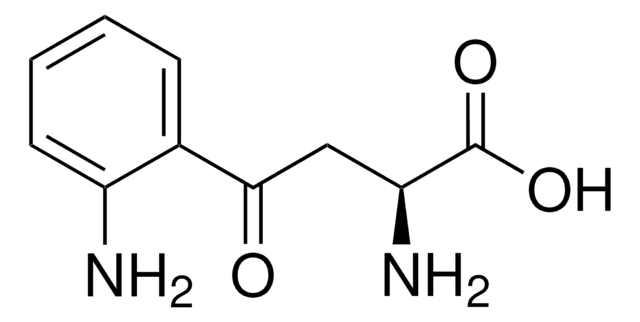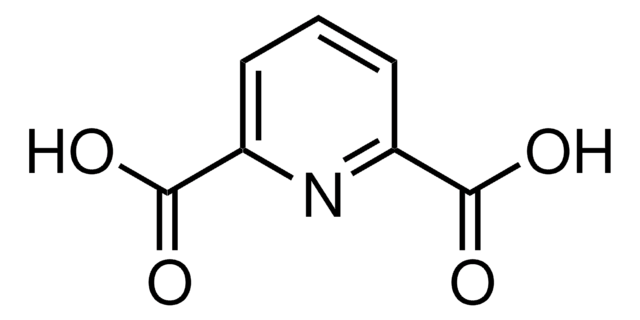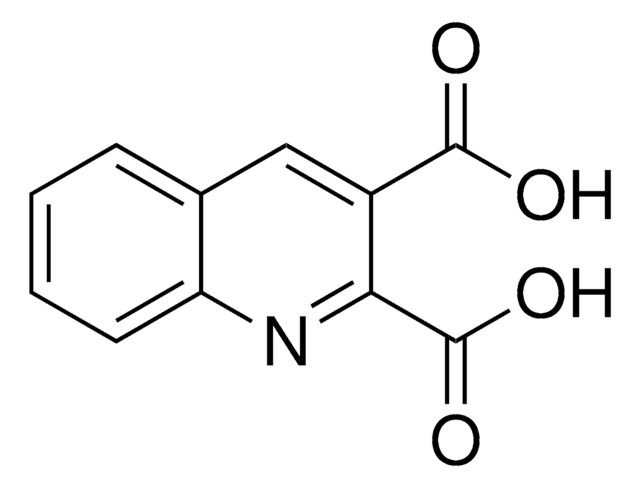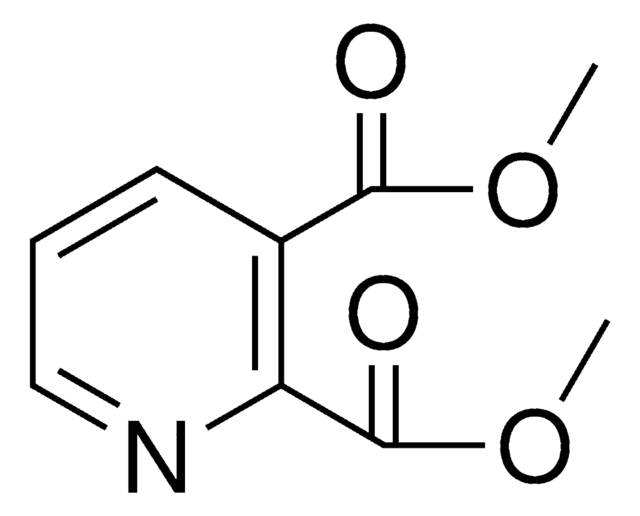推荐产品
品質等級
化驗
99%
形狀
powder
mp
188-190 °C (dec.) (lit.)
SMILES 字串
OC(=O)c1cccnc1C(O)=O
InChI
1S/C7H5NO4/c9-6(10)4-2-1-3-8-5(4)7(11)12/h1-3H,(H,9,10)(H,11,12)
InChI 密鑰
GJAWHXHKYYXBSV-UHFFFAOYSA-N
基因資訊
rat ... Gria1(50592) , Grin2a(24409)
正在寻找类似产品? 访问 产品对比指南
應用
抑制葡萄糖合成。
訊號詞
Warning
危險聲明
危險分類
Eye Irrit. 2 - STOT SE 3
標靶器官
Respiratory system
儲存類別代碼
11 - Combustible Solids
水污染物質分類(WGK)
WGK 3
個人防護裝備
dust mask type N95 (US), Eyeshields, Gloves
其他客户在看
L Garcia-Salguero et al.
Archives internationales de physiologie, de biochimie et de biophysique, 99(3), 237-242 (1991-06-01)
The in vitro and in vivo effects of several different inhibitors of carbohydrate metabolism have been studied. The in vitro addition of 5-methoxyindole-2-carboxylic acid (MICA), pent-4-enoic acid, and quinolinic acid to the perfusion medium significantly inhibited liver gluconeogenesis in 48-hour-starved
Dorit Cohen-Carmon et al.
Molecular neurobiology, 57(3), 1768-1777 (2019-12-14)
Huntington's disease (HD) is a neurodegenerative late-onset genetic disorder caused by CAG expansions in the coding region of the Huntingtin (HTT) gene, resulting in a poly-glutamine (polyQ) expanded HTT protein. Considerable efforts have been devoted for studying HD and other
Valéry Combes et al.
Trends in parasitology, 28(8), 311-319 (2012-06-26)
Homeostasis implies constant operational defence mechanisms, against both external and internal threats. Infectious agents are prominent among such threats. During infection, the host elicits the release of a vast array of molecules and numerous cell-cell interactions are triggered. These pleiomorphic
Gilles J Guillemin
The FEBS journal, 279(8), 1356-1365 (2012-01-18)
Over the last two decades, evidence for the involvement of quinolinic acid (QUIN) in neuroinflammatory diseases has been exponentially increasing. Within the brain, QUIN is produced and released by infiltrating macrophages and activated microglia, the very cells that are prominent
Gilles J Guillemin et al.
Neuro-degenerative diseases, 2(3-4), 166-176 (2006-08-16)
The kynurenine pathway (KP) is a major route of L-tryptophan catabolism leading to production of several neurobiologically active molecules. Among them is the excitotoxin quinolinic acid (QUIN) that is known to be involved in the pathogenesis of several major inflammatory
Global Trade Item Number
| 货号 | GTIN |
|---|---|
| P63204-100G | 4061834393269 |
| P63204-25G | 4061834393276 |
我们的科学家团队拥有各种研究领域经验,包括生命科学、材料科学、化学合成、色谱、分析及许多其他领域.
联系客户支持










